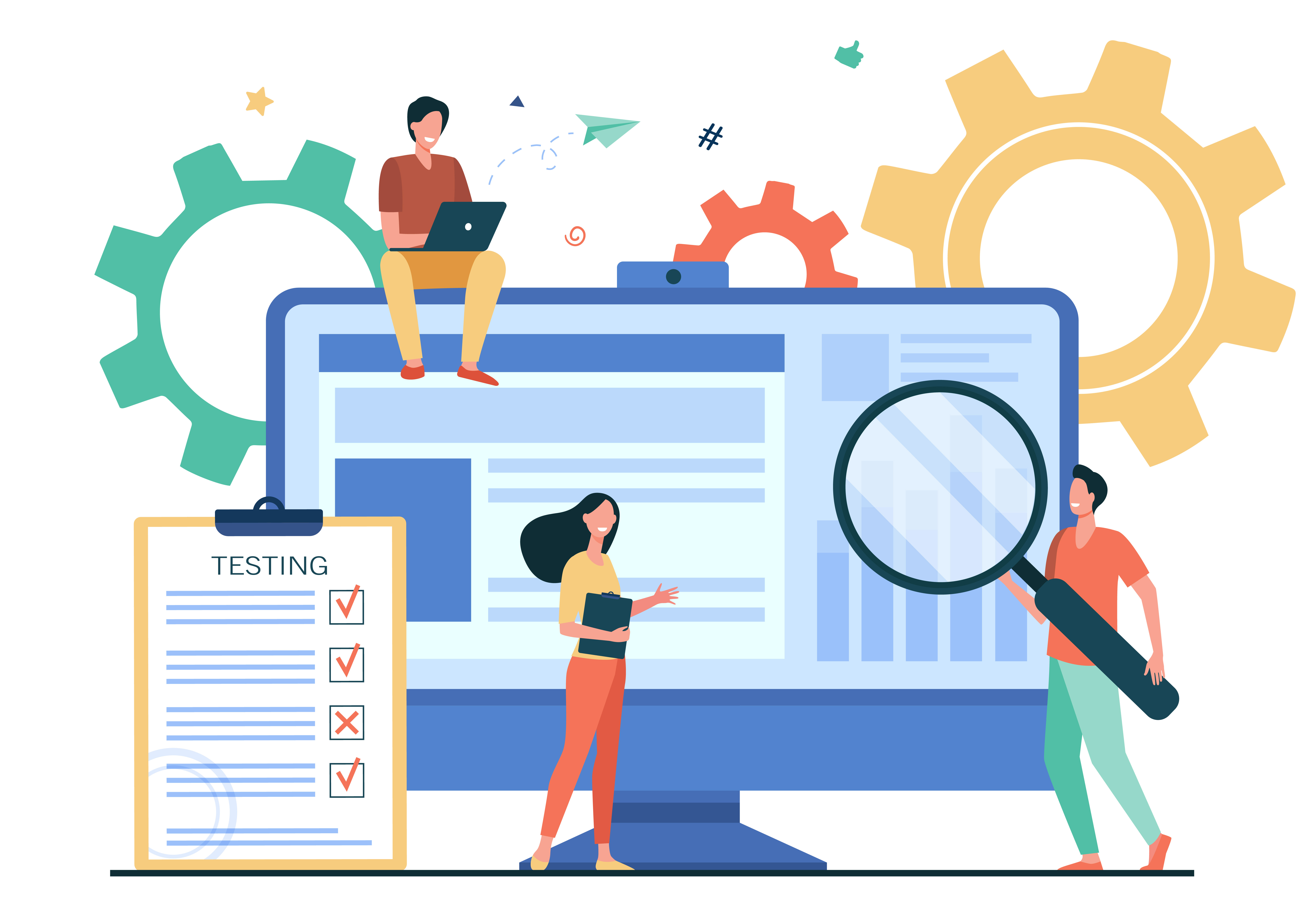Power of Predictive Customer Analytics In Enhancing Customer Support
Historically, customer support methodologies have seen companies take a reactive approach to customer issues. Improving customer experience was more about finding solutions to self-diagnosed customer issues than companies proactively taking steps to improve the value and quality of their products and services.
At best, reactive customer support is time-consuming and “behind the curve”; at worst, it sees support agents unable to own and resolve tickets end-to-end, causing a spike in engineering escalations and further delays and disruption to internal teams and customers alike. The result? Frustration and dissatisfaction on all sides.
Whether you’re in B2B SaaS, e-commerce, or another industry, customer happiness and employee satisfaction are likely to be foundational for success, making alternative approaches increasingly attractive. Yesterday, reactive customer support was the status quo. Today, with the advent of predictive analytics and proactive capabilities, it doesn’t need to be.
Analyzing customer data is pivotal in transitioning from reactive to proactive customer support strategies, enabling companies to increase revenue, optimize pricing, identify trends, and make informed decisions.“Designing great customer experiences is getting easier with the rise of predictive analytics” - McKinsey & Company.
What is Predictive Customer Analytics?
Predictive customer analytics in support means that companies can help customers resolve issues before they occur and sometimes even before they are even aware of them! Predictive customer experience analytics leverages AI to observe customer activity and analyze historical data to find patterns in the data. The patterns and data uncovered in predictive analytics can then be used to understand how a customer uses the products and detect potential issues that a customer may face.
Salesforce found that 66% of customers expect companies to understand their unique needs and expectations. How do you measure up?
Modern customer support teams use historical and real-time customer data to understand customers’ behaviors, needs, and pain points using predictive analytics. Technological advances in predictive analytics and the field of Artificial Intelligence (AI) enable this data to be leveraged to solve problems as and when they occur (and sometimes before!), reducing delays and boosting support agent productivity by providing front-line support staff with real-time suggestions on how best to solve potential issues, as well as routes to resolution. The data insights can help prevent customer escalations and churn.
To get predictive analytics right, companies need a technology stack that enables support agents to take effective action to resolve customer issues. What’s needed is the ability to collect customer data and share insights with the support agents in real-time. With this, support agents are empowered with accurate and timely customer knowledge. How predictive analytics can be applied includes leveraging it for upselling and cross-selling in retail, responding to market changes in SaaS businesses, and generating product recommendations to convert prospective customers into buyers.
Types of Data in Predictive Customer Analytics
Understanding the customer journey through predictive analytics involves analyzing various types of data collected from multiple, relevant data sources. This comprehensive approach is crucial for identifying trends, analyzing user behavior with a product, creating detailed customer personas, forecasting valuable users, identifying at-risk customer segments, addressing root causes of dissatisfaction, improving customer experience, collecting feedback, measuring customer loyalty, and mapping out customer pain points to enhance engagement. These data sources typically include:
Customer Demographics: Basic information about customers, such as age, gender, location, and income, provides a foundational understanding of the customer base.
Transactional Data: Information on past purchases, including item details, transaction frequency, and purchase history, helps identify buying patterns and customer preferences.
Behavioral Data: Data related to how customers interact with a company’s website, mobile app, or other digital platforms, including page views, click-through rates, and session durations.
Customer Service Interactions: Records of customer service inquiries, feedback, and support interactions, offering insights into customer satisfaction, pain points, and other customer service metrics.
Social Media Data: Information gathered from social media platforms, including customer comments, reviews, and social engagement metrics, provides a valuable source of customer sentiment and feedback.
Survey Responses: Data collected through customer surveys or feedback forms, offering explicit insights into customer preferences, opinions, and satisfaction levels.
Email and Communication Data: Information about email interactions, open rates, click-through rates, and the content of email correspondence with customers.
Model Requirements for Customer Analytics
To effectively leverage customer analytics and predictive analytics, certain model requirements must be met:
Data Integration: Successful customer analytics relies on integrating data from various sources. This integration involves collecting, storing, and organizing data in a way that ensures it is accessible for analysis.
Data Quality: High-quality data is essential for meaningful insights in predictive analytics. Data should be accurate, complete, and free from errors or inconsistencies to prevent the introduction of bias into the analysis.
Data Preprocessing: Prior to predictive analytics analysis, data often needs to be preprocessed, including cleaning, transforming, and handling missing values. This step ensures that the data is ready for modeling.
Segmentation: Customer analytics often involves segmenting customers into distinct groups based on shared characteristics or behavior. Effective segmentation is crucial for targeting the right customers with personalized marketing efforts.
Machine Learning Models: Machine learning models are commonly used in customer analytics to identify patterns and make predictions. These models require feature engineering, training, and validation to perform effectively.
Predictive Analytics: Predictive analytics models are essential for identifying potential customer behaviors, such as churn prediction, upselling opportunities, and product recommendations.
Customer Lifetime Value (CLV) Analysis: Calculating CLV helps businesses understand the long-term value of a customer, which can guide decisions on customer acquisition and retention strategies for predictive analytics.
A/B Testing: To validate the effectiveness of marketing strategies, A/B testing is often used, where different marketing approaches are compared, and their impact on customer behavior is analyzed.
Privacy and Compliance: Data privacy and regulatory compliance (e.g., GDPR or CCPA) are critical considerations in customer analytics. Businesses must ensure that they handle customer data responsibly and in accordance with relevant laws.
Data Visualization and Reporting: Effective communication of insights is key. Data visualization and reporting tools help present findings in a clear and actionable manner for decision-makers.
Continuous Learning: Customer behavior and preferences evolve over time. Successful customer analytics models should be capable of adapting to changing customer dynamics and trends.
In summary, customer analytics and predictive analytics is a multifaceted approach that relies on various data sources and analytical techniques to gain insights into customer behavior. By meeting the necessary model requirements and leveraging data effectively, businesses can make informed decisions, enhance customer experiences, get competitive advantage, and drive marketing strategies that resonate with their target audience.
Future Trends in Predictive Customer Service Analytics
As the landscape of customer support continues to evolve, the future of predictive customer service analytics holds exciting possibilities, with customer experience predictive analytics emerging as a key driver of future trends. Anticipating trends and staying ahead of technological advancements is crucial for organizations seeking to use predictive analytics to enhance customer support experiences. The predictive analytics software market is experiencing significant growth, underscoring the increasing value of AI-driven predictive analytics platforms in driving hyper-personalization and improving predictive customer service analytics across various industries. Here’s a glimpse into the future trends shaping predictive customer analytics:
A. Advancements in AI and Machine Learning
Deep Learning for Complex Predictions:
The integration of deep learning techniques will enable more accurate predictions, especially in scenarios with complex and nuanced customer behaviors. Neural networks and deep learning algorithms will offer enhanced capabilities in understanding and predicting intricate patterns.
Explainable AI in Customer Support:
Explainable AI models will gain prominence, providing insights into how predictions are made. This transparency is crucial for building trust and understanding among customer support teams and customers alike.
B. Integration with Emerging Technologies
Voice Analytics for Customer Insights:
Voice analytics, powered by predictive models, will become a key tool for understanding customer sentiments, customer service data, and preferences during phone interactions. This technology will aid in predicting customer needs and tailoring responses accordingly.
C. The Evolution of Hyper-Personalization in Customer Support
Individualized Customer Journeys:
Predictive analytics will evolve to create hyper-individualized customer journeys. Customer support interactions, recommendations, and issue resolutions will be uniquely tailored based on each customer's historical data, preferences, and behaviors.
Predictive Hyper-Personalization in Automated Interactions:
Automated customer interactions, including chatbots and virtual assistants, will leverage predictive analytics for hyper-personalization. These automated systems will anticipate customer queries and preferences, providing a seamless and personalized experience and powering predictive analytics.
D. Continuous Learning and Adaptation
Dynamic Models for Evolving Customer Behaviors:
Predictive models will become more dynamic, continuously learning from new data and adapting to evolving customer behaviors. This agility is crucial in an environment where customer preferences and expectations are subject to rapid changes.
Integration with Feedback Loops:
Predictive analytics systems will increasingly integrate with customer feedback loops. Direct customer feedback will be used to refine and enhance predictive models, ensuring they align with customer satisfaction goals.
As organizations embrace these future trends, predictive customer service analytics will play an increasingly integral role in elevating customer support experiences. Staying attuned to these advancements in data science will empower businesses to not only meet but exceed customer expectations in the ever-evolving landscape of customer support.
Key Components of Predictive Customer Service Analytics
Predictive customer service analytics is a multifaceted approach personalized customer experience that relies on several key components, each playing a crucial role in uncovering insights, anticipating customer behavior, and enhancing the overall customer support experience.
A. Customer Data Sources and Integration
Diverse Data Streams:
Component: Predictive customer analytics draws insights from a variety of data sources, including customer interactions, purchase history, website behavior, and social media engagement.
Importance: The integration of diverse data streams enables a comprehensive understanding of customer behavior, preferences, and patterns for the purpose of predictive analytics.
CRM and Customer Database Integration:
Component: Customer Relationship Management (CRM) systems and centralized customer databases serve as foundational components.
Importance: Integrating CRM data ensures a unified view of customer interactions across touchpoints. This centralized data repository is crucial for building accurate predictive models.
B. Machine Learning Algorithms for Prediction
Regression Analysis:
Component: Regression models help identify relationships between variables, enabling predictions of numerical outcomes.
Importance: Regression analysis is fundamental for predicting quantitative metrics such as customer lifetime value, purchase propensity, and support ticket resolution times.
Classification Models:
Component: Classification algorithms categorize customers into segments based on specific criteria.
Importance: These models are valuable for predicting customer segments that may require distinct support strategies, allowing for targeted and personalized approaches.
Clustering Algorithms:
Component: Clustering algorithms group customers based on similarities in behavior or preferences.
Importance: Clustering helps identify customer segments with common characteristics, facilitating personalized support strategies for each group.
Time Series Analysis:
Component: Time series models analyze data points over time, predicting future trends and patterns.
Importance: This is crucial for predicting seasonal variations in customer behavior, allowing businesses to tailor support strategies to meet changing needs.
C. Real-Time Data Processing and Analysis
Streaming Analytics:
Component: Real-time processing of data streams allows for immediate analysis of customer interactions.
Importance: Streaming analytics enable businesses to respond swiftly to customer needs, providing real-time support and intervention when necessary.
Data Warehousing:
Component: Storing and processing large volumes of historical data in a data warehouse.
Importance: Data warehouses facilitate in-depth retrospective analysis, helping businesses identify long-term trends and patterns that inform predictive models.
Understanding and optimizing these key components are vital for the successful implementation of predictive customer service analytics. The integration of diverse data sources, statistical algorithms, the application of appropriate machine learning algorithms, and real-time data processing collectively empower businesses to proactively meet customer needs and deliver exceptional support experiences.
Why are companies moving towards predictive customer service analytics?
Some of the ways predictive customer service analytics in support can help companies include:
A win-win situation for everyone: Predictive analytics and customer service bench marked on historical data leads to increased customer satisfaction by reducing the time taken to resolve issues -- and sometimes means no delay! Meanwhile, proactive support is likely to see customer service team experience greater work satisfaction because they deal with fewer unhappy customers and can focus on impactful work. The engineering team will also likely see fewer tickets being escalated to them. This would ultimately reduce business costs for companies.
Improving customer loyalty: One of the most powerful ways to drive customer loyalty and retain existing customers is by providing delightful customer service. Customer support is about providing positive customer experiences by quickly resolving any issues the customer may or is already facing. Doing this effectively will improve customer satisfaction and keep the customer happy, reducing the risk of future churn. According to research by McKinsey, due to the COVID-19 pandemic, 36 percent of US consumers reported trying a new product brand in the previous three months. Thus, more than ever, companies need to adopt predictive customer support to improve customer loyalty.
Reduce customer churn: By gathering customer data with predictive customer experience analytics, customer support management can identify customers with a high churn risk and quickly take action to improve customer experience. With the help of AI, companies can detect where these customers are having difficulties and offer targeted solutions.
Proactive Support: More companies than ever are finding ways to increase productivity through proactive support. One way to achieve this is by using predictive customer service analytics to be ahead of their customers. By detecting potential customer issues, companies can reach out to the customer with a satisfying solution. This can even be a “wow” experience for the customer.
An energy company can use historical and real-time data to determine why a customer’s energy units run out faster than usual. The customer support agent or success team can contact the customer and suggest alternative options or solutions to avoid quickly running out of energy units.
Predictive customer support enables companies to be proactive, providing value to customers, support agents, and the business. IrisAgent helps customers use predictive customer service data analytics to identify potential user issues and provide suggestions on how to solve the issues. Schedule a demo today to see for yourself.
Frequently Asked Questions
What is predictive customer analytics?
Predictive customer analytics is a field of predictive analytics that uses historical customer data, machine learning algorithms, and statistical models to predict future customer behaviors, preferences, and needs for marketing campaigns.
How does predictive analytics benefit customer support?
Predictive analytics helps customer support teams anticipate customer needs, and identify trends, potential issues, and customer journeys, and proactively address them, leading to improved customer satisfaction and loyalty.
What types of data are used in predictive analytics for customer support?
Data sources for predictive analytics include customer interactions, purchase history, customer feedback, social media, and more. These data points are used to build models that predict future customer behavior and support requirements.
How does predictive analytics enhance the efficiency of customer support teams?
By predicting customer issues in advance, support teams can allocate resources more effectively, streamline workflows, and prioritize high-impact tasks, resulting in increased efficiency, customer retention, and faster issue resolution.
Can predictive customer analytics help in personalizing customer interactions?
Yes, predictive analytics enables personalized customer interactions to track customer behavior by anticipating individual preferences, allowing support teams to tailor their responses, recommendations, and solutions to each customer.





